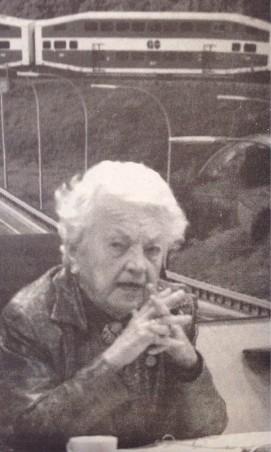By Jen Gerson
Students commuting from outside Toronto won’t know the fate of the GO Transit student discount until the provincial Minister of Transportation has a chance to review the proposal to eliminate it.
The GO board of directors had planned to vote on the issue last Friday, but deferred the vote after Frank Klees, the Minister of Transportation, asked for time to review the proposal.
Board members said they would probably base their final decision on recommendation from the ministry.
“If the minister says that the increase should not go through, then we’d put in a very difficult position,” said Mississauga Mayor Hazel McCallion, a member of the board.
Student presenters from several universities and colleges swarmed the meeting to protest the possible loss of student discounts which would be replaced with more expensive youth discounts.
Students who qualify for the new pass would see a fare increase of 25 to 30 per cent for a monthly pass. Students older than the proposed age limit of 21 would be stuck with fare hikes of 64 to 68 per cent for a monthly pass.
GO Chairperson Gordon Chong is also debating whether or not to increase the age limit to 25 in an attempt to bring more students into the fold of the new youth discount.
But students were quick to argue that the present student discount should be left alone.
“Students are strapped, we absolutely need this discount,” said Kelly Holloway, vice-president elect of external affairs at the University of Toronto.
“Living in neighbourhoods more affordable than University of Toronto is what makes university an option,” she said.
But students aren’t the only ones facing tight budgets.
GO is expecting millions of dollars in subsidies from the federal government, but the money has not come through yet.
GO was stiffed for another $8 million by the city of Toronto, said board member Bob Wade.
“You don’t honestly think that student fares should stay the same forever do you?” asked board member Roger Anderson. “You must know that with the cost of labour, the acquisition of buses and lately the price of fuel the money’s got to come from somewhere.”
McCallion said that if you compared GO trains to the cost of driving a car “it would make our student fare look sick.”
The presenters, most of them representatives from the Canadian Federation of Students, offered to form an alliance with GO to lobby the government for more money.
“You should work with schools to secure provincial funding that will adequately address the problems of underfunding,” said Pablo Vivanco, York University vice-president of external affairs.
“Making students responsible for government underfunding is irresponsible … students are willing to make underfunding of GO transit an issue,” said Ken Marciniec, RyeSAC vice-president of education.
McCallion seemed willing. “We would like to work with you to do that,” she said.
Marciniec has spearheaded a post-secondary petition campaign and has sent hundreds of letters from students to Chong and Transportation Minister Frank Klees.
“At least in the short term, they’re not going to be raising the fare,” said Marciniec, calling the meeting an “interim victory.”
In response to next year’s double cohort and the expected increase in student riders, the GO board approved a proposal to buy 26 new buses and hire 38 more drivers.
GO projects new buses will cost about $14.7 million, but that they will be desperately needed.
“We’ve got conservative projections of having 2,500 more people per day,” said Karen Majerly, a GO spokesperson.
Majerly said that GO already had trouble picking up all of its riders.
“We need this just to keep,” she said. “We have certain bus trips where we have to leave people behind because there isn’t enough room.”










Leave a Reply